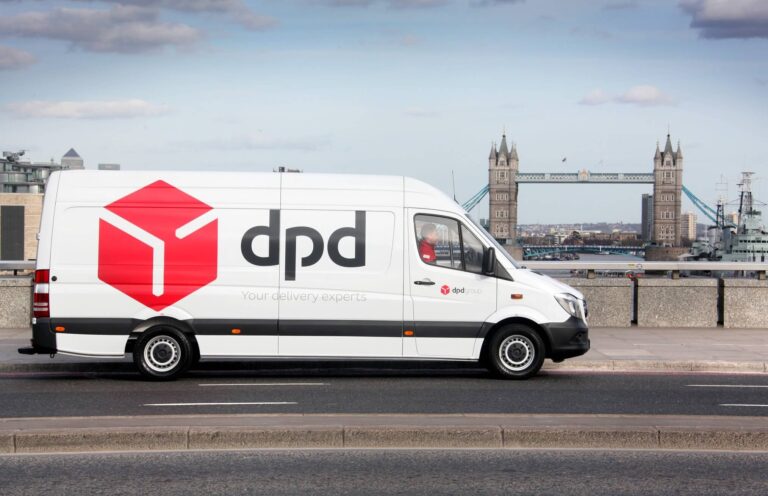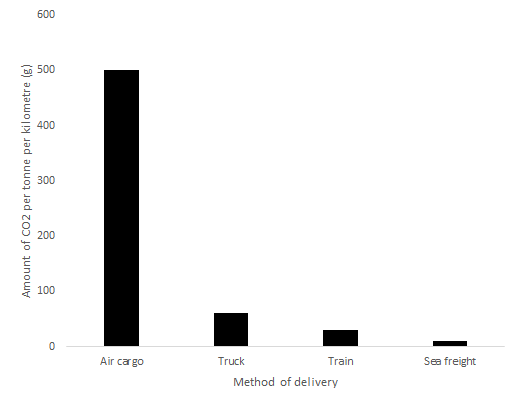Delivery Shame?
The world is slowly turning into a village; in our modern era, packages can now be sent halfway around the globe in record time. Due to consumerism and the fast pace of modern life, there is now an expectation for packages to arrive quickly.
As a result, packages are not only shipped in containers but also in planes, significantly increasing the environmental impact. Shipping costs are also decreasing, and within the Netherlands, ‘ordered today, home tomorrow’ has become the norm.
Even ‘ordered today, delivered the same day’ is gaining popularity, but at what cost to our environment?
Below is an overview of emissions to transport one ton of freight one kilometer. The emissions from a delivery van are relatively high because of the frequent stops and starts taken into account.

Delivery Van
A loaded delivery van emits an average of 154 grams of CO₂ per kilometer. Fortunately, not only your package is in the van. Also, not every package is equally heavy or large. The International Journal of Transportation Science and Technology conducted a comprehensive study on the emissions associated with package delivery. If we lump everything together, a package sent within the Netherlands causes an average of 0.6 kg (or 600 grams) of CO₂ emissions. This is equivalent to a volume of 305 liters or about 122 inflated balloons.
However, this does not take into account the indirect emissions, as investigated by SOMO in this report. A product has already undergone a significant journey before being loaded into a delivery van.

Maritime Shipping
Calculating the CO₂ costs of shipping a package involves considering the mode of transport, and the shipping industry globally plays a crucial role in transporting goods. The amount of goods shipped in containers worldwide has increased from 2017 to 1.83 billion tons, and this figure is expected to continue rising in the coming years.
The total emissions from maritime shipping, based on a multi-year average, account for 2.8% of the global greenhouse gas emissions. The emissions from international shipping contribute to 2.4% of all greenhouse gas emissions. This translates to 1,036 million tons of CO₂eq per year for total shipping and 866 million tons of CO₂eq per year for international shipping.

Climate Neutral Shipping Certificate
Kuwi.org has introduced a solution for consumers to make more sustainable choices:
The climate-neutral shipping certificate. This certification serves as a crucial tool for individuals who are keen on reducing their environmental footprint.
By displaying this certificate on product packaging, consumers can rapidly assess the shipping footprint of a product before making a purchase decision.
Aviation
Despite the significant amounts of CO₂ emitted by maritime shipping, it is by far a much better way to send packages globally than by plane.
As calculated by Time for Change, a ton of freight transported 1 km by a modern ship emits between 10 and 40 g of CO₂. In contrast, the same ton of freight transported 1 km by plane results in approximately 500 g of CO₂ emissions; that’s up to 50 times more than shipping.
Compared to other forms of transport, shipping still has the lowest environmental impact. A modern freight train emits 30 to 100 grams of CO₂ per ton per kilometer of transport, and a modern truck or delivery van emits between 60 and 150 grams of CO₂ per ton per kilometer of transport.

CO₂-Neutral Shipping
Many companies now offer CO₂-neutral shipping packages, such as DPD. They achieve this by calculating their fuel, water, and paper usage, and depending on the distance a particular shipment has traveled, they offset the required CO₂eq through projects worldwide. While it is encouraging to see large companies like DPD addressing their environmental impact, not all companies follow suit. Therefore, at Kuwi.org, we have implemented a compensation program to help businesses neutralize the emissions from shipping packages.

Next Day Delivery
The speed of delivery is currently a significant concern. Due to the demand for quick delivery, many companies do not optimize their delivery routes and send packages on trucks that are not full, increasing the environmental impact per item. Additionally, fast delivery relies more on air freight, which is more environmentally taxing than less impactful maritime shipping. We are therefore very concerned about the rise of ‘same day delivery.
Food for Thought
Another significant environmental issue with the increasing number of packages sent worldwide is the plastic and cardboard used to pack and protect these packages. An article from Fast Company states that the cardboard shipped in the US alone in 2017 is equivalent to nearly 1 billion trees (excluding other types of packaging). A significant portion of this ends up in the oceans, where it is predicted that by 2025, there will be 1 ton of plastic for every 3 tons of fish. While not all of this will undoubtedly come from packaging, it puts the industry’s waste into perspective.
Solutions
The increasing number of packages sent worldwide comes with significant environmental costs, both through the shipping method and the materials used to package the items. Some companies are making efforts to reduce their environmental impact, but many are not doing enough.
As a concerned consumer, it often feels like there isn’t much control over how you receive your products. What can you do? We can offer you some suggestions:
- Consume less! Ask yourself if you really need this product.
- Provide feedback to the seller; social media makes it easy and quick to connect. Ask, for example, why they don’t use sustainable packaging.
- Buy locally. Sometimes a product is cheaper at a greater distance, but the one paying the price difference is our planet.
- Choose companies that offset their emissions.
- Join kuwi.org and offset your own carbon footprint.





















